Today will offer another look at this iconic member of the African safari, the hippo (Hippopotamus amphibius). Hippos were historically proposed to be relatives of pigs due to molar patterns; however molecular evidence reveals that cetaceans are the closest extant relatives of hippos. These two groups form a clade that diverged from ruminants 60 million years ago and shared a common ancestor over 54 million years ago, with anthracotheres being the stem lineage that hippos evolved from. The Hippopotamidae family used to be widespread, with the current extant species and many others existing further across North Africa and Eurasia. Now the only two extant species exist within sub-Saharan Africa. These creatures lack sweat glands, so they stay near rivers and swamps to cool off. The common hippo is one of the largest extant terrestrial animals, with most adults ranging from 2.9-5 meters in length and 1.3-4 metric tons in mass. Females reach physical maturity at age 25 while males continuously grow throughout their lives. They are conventionally herbivores, but have been documented to consume meat, and even partake in cannibalism. These are thought to be behavioral outliers rather than true dietary habits. A marked characteristic about hippos is their aggression, which greatly limits the frequency of predatorial attacks on adult individuals. This is also the cause of their high rate of human fatalities, historically spanning back as being the cause of death of the first pharaoh of united Egypt, Narmer. Common hippos are also remarkably fast, reaching speeds beyond 20 mph (30km/h) and propel themselves across underwater floors. The common hippo’s IUCN status is ‘’Vulnerable’’, with an estimate of 125,000-150,000 population that is rapidly declining. The ultimate cause is poaching, though the common hippo’s reliance on water sources also makes them sensitive to agricultural and industrial developments.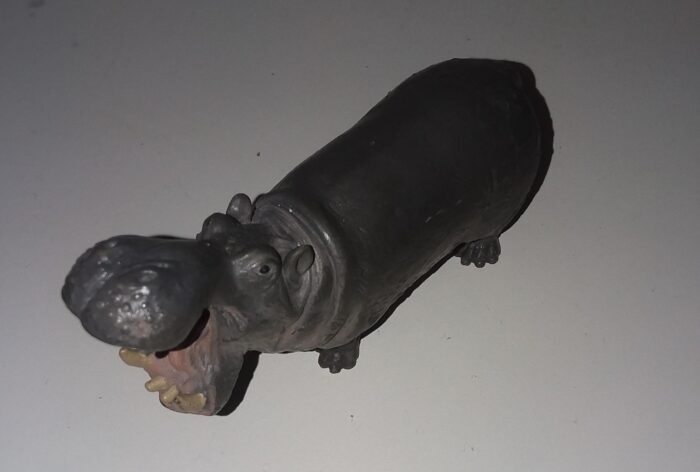
The hippo, along with most megafauna of the African continent, is by no definition a stranger to toy manufacturers. Today, I return to my collection of older Schleich figures to review Schleich’s male hippopotamus from 1996.

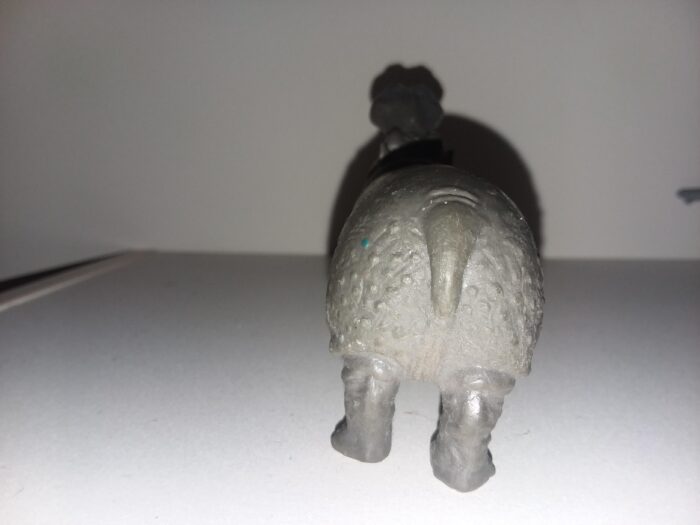
The hippopotamus measures at about 13 cm total when including the tail length. This places the toy at roughly the 1:22-1:38 scale for most adult individuals. This is fairly in line with the scales for other large terrestrial animals. The overall sculpt and color is impressive. The proportions and details on the skin appear to be correct for the hippo, with folds and little bumps for a realistic look. The medium to light gray along with some pink accents are also accurate to the true animal. My only main critique is that the head seems to potentially be too large compared to the rest of the body. Otherwise, this is very nice for a figure that is 25 years old.
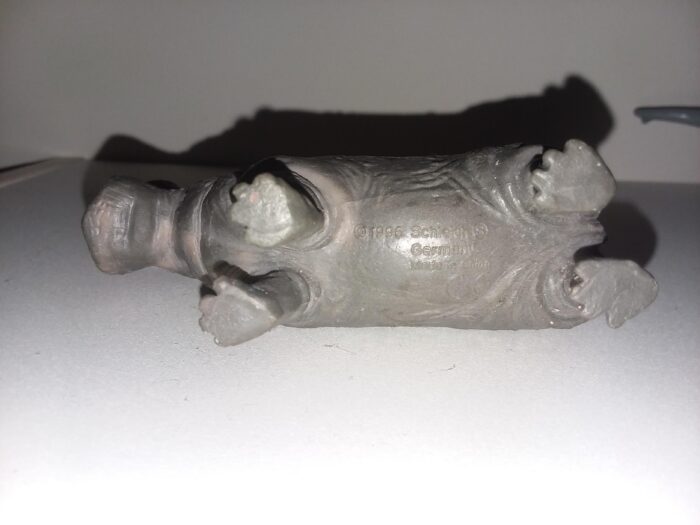
Despite being marketed as a male, there are no sculpted genitals on this figure as found on the black rhinoceros that I have previously reviewed. This is likely due to the fact that the male hippopotamus lacks a discernible scrotum and the penis is retracted when not erect.
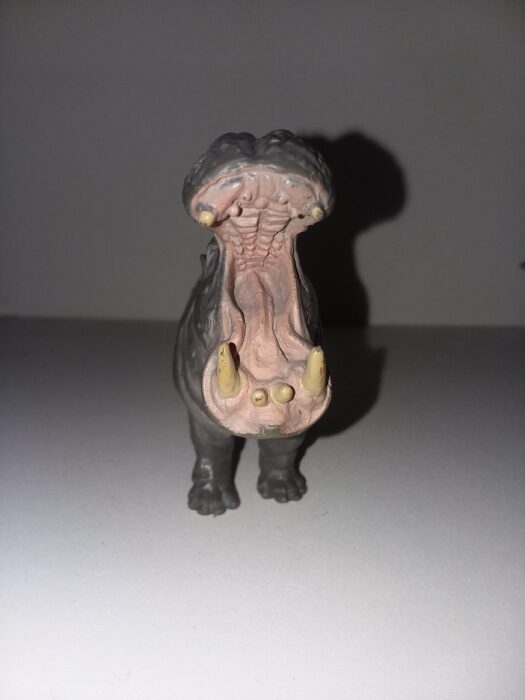
In lieu of those features, the male is distinguished from the female from the same line by taking up a more aggressive pose, displaying the tusks that can reach up to 1 meter in length. The most prominent canines are painted, though most of the molars are either not sculpted or left in a flesh-color that blends them into the mouth. The mouth overall boasts a nice level of detail.
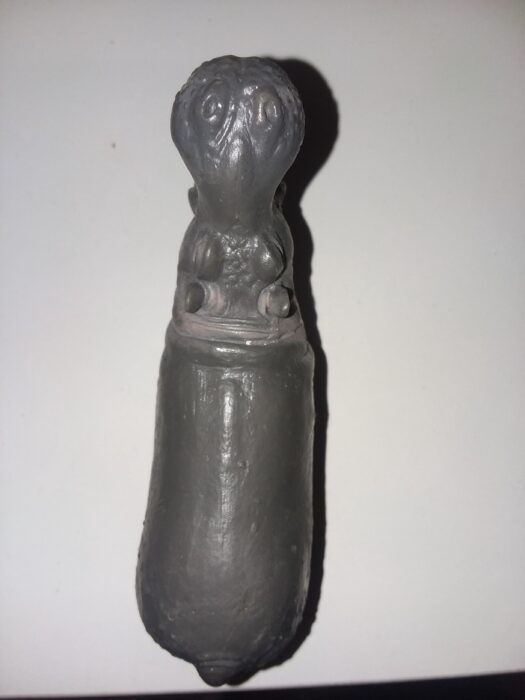
The Schleich 1996 hippo is very nice overall. Figures of relatively higher quality and accuracy have been released since this figure’s lifespan, however, it’s still notable how well Schleich’s older hippo has aged. This figure has since been retired since 2013, so those interested in collecting this will have to resort to scouring the secondhand market.
Disclaimer: links to Ebay and Amazon on the AnimalToyBlog are affiliate links, so we make a small commission if you use them. Thanks for supporting us!



